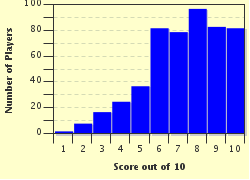Quiz Answer Key and Fun Facts
1. In 1914 a World War broke out. The United States of America was officially neutral in the conflict until 1917. One of the reasons they joined the Allied effort was because they did not agree with Germany's use of USW. What does USW stand for?
2. A good chunk of the 20th century revolved around the Cold War between the USA and the USSR, as well as their respective supporters. Ultimately the Cold War came to an end by the 1990s and the USSR ceased to exist in 1991. What did USSR stand for (in English, please)?
3. The WAC was formally created in the US in 1943; over 150,000 members contributed in many ways to the war effort in World War II. What does WAC stand for?
4. The 1970 October Crisis in Canada saw the kidnappings of two members of government by an organization called the FLQ. What did FLQ stand for?
5. The RAF was first established in 1918 by combining the RFC and the RNAS. A few acronyms here, but what does RFC stand for?
6. During the Cold War, many nations, particularly in Africa and Asia, belonged to a group called NAM. What does NAM stand for?
7. A political lobbying group known as the ASL, more successful than the WCTU, felt very triumphant in 1920 when the 18th Amendment came into effect in the United States (it was later repealed). In this context, what does ASL stand for?
8. During the Cold War, there was a period known as détente when the two sides tried to reach agreements to prevent the Cold War from becoming 'hot'. During this time, the SALT (I and II) discussions took place between the two opposing blocs. What does SALT stand for?
9. UNAMIR, a United Nations mission started in 1993, is considered by many to have been a huge failure. What country is represented by the R in UNAMIR?
10. During WWI, the BEF was commanded by Douglas Haig. What does BEF stand for?
Source: Author
guitargoddess
This quiz was reviewed by FunTrivia editor
bloomsby before going online.
Any errors found in FunTrivia content are routinely corrected through our feedback system.


